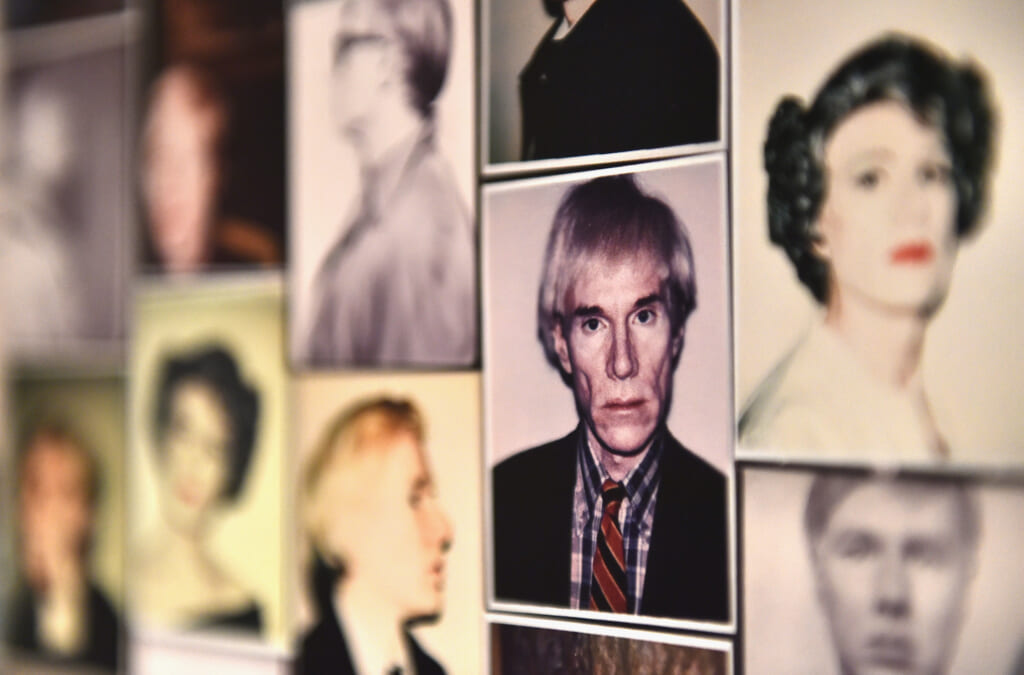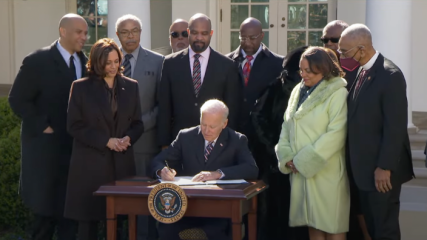Dispute over Warhol silkscreen of Prince headed to Supreme Court
The battle between the Warhol estate and photographer Lynn Goldsmith over a portrait of Prince may further test the 'fair use' doctrine.
Though he’s been dead for nearly six years, the iconic musician Prince continues to make headlines. This week, the artist’s estate thrilled fans with the announcement that the legendary Syracuse tour stop on the “Purple Rain” tour will be released in three new editions with a tour book that includes never-before-released images.
Coincidentally, it is also an image of Prince that is at the center of a legal dispute headed all the way to the Supreme Court.
NBC News reports the Court will take up the “fair use” dispute between the Andy Warhol Foundation and photographer Lynn Goldsmith, over a portrait she took of the late musician in 1981. Vanity Fair licensed the black-and-white photograph in 1984 and subsequently commissioned Warhol to create a series of 16 silkscreened images based on the photo to be used as a cover for the magazine, per NBC.

When Prince passed away in 2016, Vanity Fair again used one of the Warhol images for the cover of a special tribute issue. Goldsmith sued, alleging her copyright had been infringed.
Further details were provided by CNN:
The Warhol Foundation, believing that Goldsmith would sue, sought a “declaration of noninfringement” from the courts. Goldsmith countersued with a claim of copyright infringement. In court papers, her lawyers said she had been “stunned” to “realize that Warhol had created silkscreens of Prince using her original portrait.”
Source: CNN
The case hinges on the ‘fair use’ doctrine, which allows the use of copywritten works under certain circumstances including a directive about how the new works are created. At issue here is whether the Warhol silkscreens are “transformative” enough that they don’t need permission to be used.
“Warhol produced the first image in the Prince Series, using Goldsmith’s photograph as source material,” Roman Martinez, a lawyer for the foundation, argued in court papers. Martinez further maintained Warhol made substantial changes in tone, lighting and detail and “transformed” Goldsmith’s original image to create pieces that “comment on the manner in which society encounters and consumes celebrity.”
Goldsmith’s case was at first denied by a federal trial judge who deemed the Warhol work transformative enough to constitute fair use. But a federal appeals court ruled against the Warhol Foundation, saying the silkscreen series wasn’t “fundamentally different.”
The foundation argues that the appeals court decision, if not overturned, “will chill artistic expression … and discourage countless artists from creating new works.”

The argument is reminiscent of the one made in the copyright case that pitted Robin Thicke and Pharrell Williams against Marvin Gaye’s estate; a suit in which Gaye’s estate ultimately prevailed. In 2015, Gaye’s family was awarded $7.3 million and half of future royalties in the controversial case, in which Thicke’s song “Blurred Lines,” produced by Williams, was deemed to have infringed upon Gaye’s 1977 hit “Got To Give It Up.”
Another precedent that will likely be a factor in the Goldsmith case is the Shepherd Fairey verdict. Fairey used an Associated Press photo as the basis for his famous Barack Obama ‘Hope’ poster, which promoted Obama’s historic 2008 campaign. AP sued the artist and won when it proved the new use of the photo wasn’t altered enough to meet the “transformative” standard and that Fairey lied about what photo he’d used as the basis for the poster.
Ironically enough, in life, Prince was notoriously protective of his music, name, and image. He forbade most photographers he worked with from independently using the images and only upon his death were multiple photographers — Allen Beaulieu, Afshin Shahidi, Randee St. Nicholas, and Jeff Katz — able to publish books featuring photos they’d taken of the artist at various points of his career.
Prince was also behind the infamous ‘Dancing Baby’ lawsuit. His record company, Universal, had a 27-second YouTube video of fan Stephanie Lenz’s toddler dancing with to the Prince song “Let’s Go Crazy” taken down at his behest.
In response, Lenz sued the label with the help of the Electronic Frontier Foundation, per The Hollywood Reporter. The case, which became a hot-button test of the rights inferred by “fair use” in then-new social media applications, was ultimately settled in 2018, though no financial details were revealed.
CNN reports Goldsmith’s attorneys had hoped the Supreme Court would decline to engage in the dispute. The Court will hear the Warhol vs. Goldsmith case during its next term in October.

Tonya Pendleton is a veteran multimedia journalist in news, sports, lifestyle and entertainment reporting. She’s written for Essence, Ebony, BET.com, The Source, XXL, Jordan Magazine, the Philadelphia Daily News, The Washington Post and more. In her current incarnation as a writer/editor with TheGrio.com and as “Things To Do” curator for NPR affiliate WHYY, she crafts content for a local and global audience. The Philadelphia resident was born and raised in New York City and is a graduate of The New School.
TheGrio is FREE on your TV via Apple TV, Amazon Fire, Roku, and Android TV. Please download theGrio mobile apps today!



